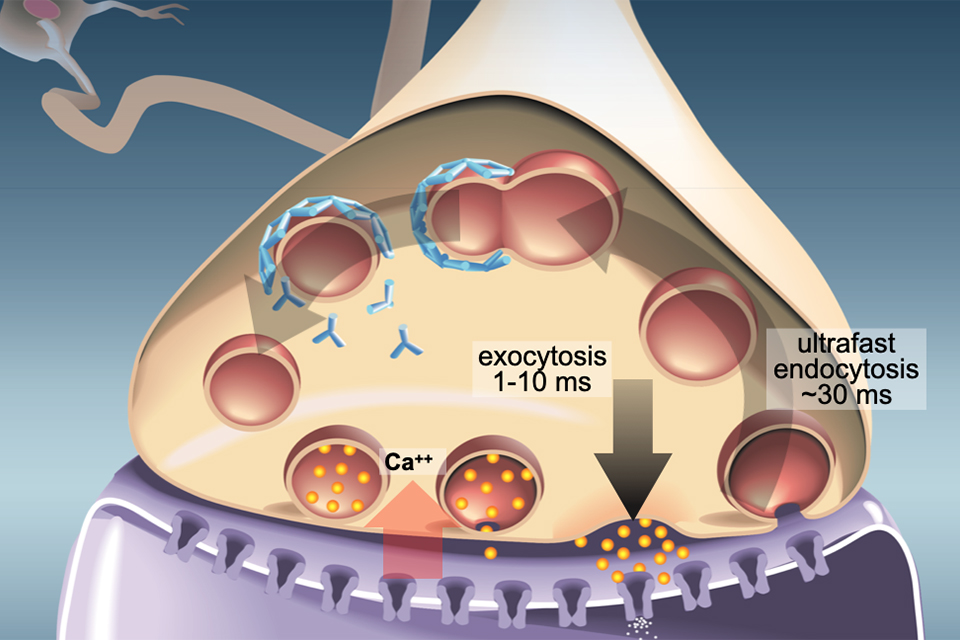Erik Jorgensen, PhD
Distinguished Professor
School of Biological Sciences
University of Utah
Investigator
Howard Hughes Medical Institute
(Nov. 30, 2021)
The Speed of the Synapse
A healthy nervous system has a need for speed in order to send messages from one neuron to the next. Rapid transmission and resetting of the neuron is key for movement, for sensing pain, for seeing the speeding car coming towards you. But how are neurons able to continue this rapid-fire messaging? Dr. Jorgenson discussed work from his lab documenting a previously unappreciated fast form of system reset. Using worm and rat models, Dr. Jorgensen has demonstrated the importance of calcium channels for speedy delivery of neurotransmitters, the chemical messengers of the brain, as well as mechanisms for the recovery and recycling of proteins and membranes after a signal is sent, readying the cell to fire once again.
A hallmark of any nervous system is that it is fast. The rate-limiting step of neurotransmission is synaptic transmission, where electrical signals are converted into the diffusion of small molecule neurotransmitters. I first will show how calcium channels are coupled to vesicle fusion to rapidly release neurotransmitters at the synapse, and second, how fusion could be rapidly coupled to recovery of membranes and proteins through endocytosis.
Neurons couple to one another via contact sites called synapses. My laboratory studies how synaptic transmission achieves enormous speed and at the same time remains robust under intense stimulation. We use the nematode C. elegans for forward genetics and validate our findings in mammals by studying neurotransmission in primary neuronal cultures from the hippocampus of rats.
Exocytosis is the process by which neurotransmitter leaves the neuron. Synaptic vesicles dock at the cell membrane at synaptic junctions and are poised to fuse by initiating pairing of SNARE proteins. Fusion of the vesicle to the plasma membrane is initiated by calcium influx into the synapse. Our studies have demonstrated that the speed of fusion is maintained by coupling the docked synaptic vesicles to calcium channels, so that calcium reaches the fusion site within microseconds. This coupling is achieved by Unc13 proteins which link calcium channels to vesicle docking.
Endocytosis is the process by which vesicles are recycled. Synaptic vesicle proteins and membrane must be recovered after fusing to the synaptic membrane. To capture images of endocytosis in a living organism, we combined optogenetics, high-pressure freezing and electron microscopy. We observed that in mouse neurons membrane was recycled within 50 to 300 milliseconds after stimulation. This novel form of membrane recovery is called ultrafast endocytosis, and it allows the synapses to restore membrane tension as well as recover synaptic vesicle components to maintain rapid neurotransmission.
